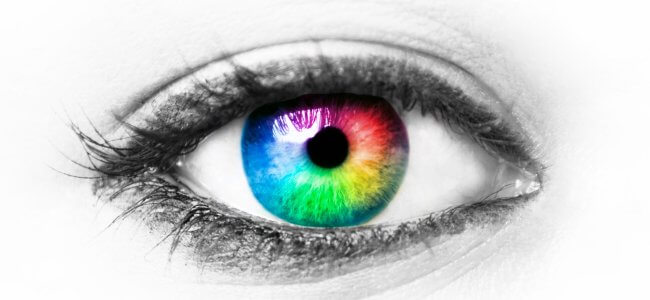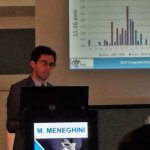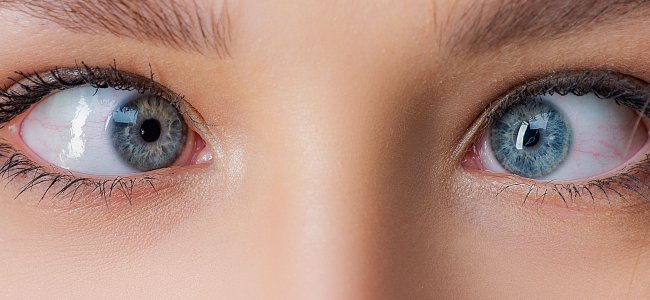Attention deficit and hyperactivity: how to recognize it?

The editorial staff of Emianopsia has the pleasure of hosting Dr Beatrice Ferrari, a neuropsychomotor expert of the developmental age. Dr Ferrari proposes an in-depth analysis of attention deficit and hyperactivity disorders.
This type of problem is part of neurodevelopmental disorders and affects the behaviour of the individual characterized by impulsiveness and inability to maintain sustained attention.
The criteria of the DSM-5
To be diagnosed with ADHD, according to DSM-5, the patient must present, before the age of 12, at least 6 symptoms of inattention or hyperactivity/impulsivity for at least six months, occurring in at least two life contexts. Such symptoms are incompatible with the level of development and negatively affect social and school/work activities.
Symptoms of inattention
- failing to pay attention to detail or making distracting mistakes in school, work, or other tasks
- difficulty in maintaining focus on tasks or gaming activities
- seeming careless during a conversation
- do not follow instructions or complete school work or duties in the workplace
- difficulty in organising tasks and activities
- feel aversion to engaging in tasks that require protracted mental effort
- often lose items needed for tasks or activities
- be easily distracted by external stimuli
- be careless in daily activities.
Symptoms of hyperactivity and impulsiveness
- shaking or clapping hands and/or feet, while seated
- leave your seat in situations where you should remain seated
- scurrying and jumping in inappropriate situations
- be unable to play or engage in recreational activities quietly
- feeling “under pressure”
- talking too much
- “shooting” an answer before the question is completed
- interrupting others or be intrusive towards them.
Epidemiology
The percentage of children with ADHD in the world is between 3% and 5% with a male/female ratio ranging from 4:1 to 9:1. The symptoms tend to subside with the development of the child. In fact, between 30% and 50% have symptoms even as adults.
Causes
The causes of the disorder are not yet fully known; however it is hypothesized a multiplicity of factors of which the most likely have a genetic origin or referable to the social and physical conditions of the child. Several scientific studies have highlighted the importance of genetic factors linked to pre- or post-partum encephalic suffering.
More current research has focused on understanding the possible neurotransmitters involved. A dopaminergic hypofunctionality has been hypothesized, which would explain the prevalence of the disorder in males over females. In fact, in males, the dopaminergic receptor system has a different organization and different evolutionary changes, compared to girls.
Symptoms of attention deficit and hyperactivity
The main symptomatology is represented by:
- inattention
- impulsiveness
- hyperactivity.
Inattention
Symptoms related to inattention occur when the child finds it difficult to concentrate and remain attentive for long periods of time. We observe difficulties of selective attention, of overall and selective listening for a prolonged time. Attentive issues are more evident when the patient is faced with tasks that are not very motivating and can also be seen in situations in which the child passes from one activity to another without completing any.
Impulsiveness
Impulsiveness refers to hasty actions; the subject seems incapable of reflecting on their choices and respond consistently with the surrounding context. This inability is manifested not only during a dialogue but also in games, when a shift in focus is required. In addition, the individual tends to interfere in the conversations and activities of others.
Hyperactivity
Hyperactivity involves excessive motor activity. The person manifests an inability to stay still, and when they can do so, there is a tendency to become agitated. Very often the movements of all parts of the body are not harmoniously directed to the achievement of a purpose.
Children generally choose motion games and struggle in desktop ones. With maturation and proper intervention, hyperactivity tends to diminish.
In general, children with ADHD have lower educational attainment than their peers, despite having the same intellectual abilities. The reasons are due to the symptomatology of the disorder, in particular because of attentive difficulty, cognitive self-regulation, impulsive responses and hyperactive behaviour within the classroom context. Your child may not be able to properly use cognitive skills such as:
- working memory
- problem solving strategies and inhibition of irrelevant information.
These skills have an impact on the comprehension of written texts, studying, and the resolution of problems.
Referring to the symptomatology, three subgroups are identified:
- Combined manifestation: there are both symptoms of inattention and hyperactivity-impulsivity
- Onset with predominant inattention: symptoms of inattention are present, but not hyperactivity-impulsivity
- Manifestation with predominant hyperactivity/impulsivity: there are symptoms of hyperactivity-impulsivity, but not those of inattention.
Possible treatments
The ideal treatment for attention deficit and hyperactivity is represented by a comprehensive approach, which involves all the contexts of the child’s life (school, family, sport..). The interventions are divided into:
- behavioural therapies
- clinical and psychological interventions
- medication.
Behavioural therapy
The treatment aims to identify and modify the positive and negative environmental contingencies that increase or decrease the frequency of some behaviours. The difficulty of carrying out such therapy, lies in the difficulty of maintaining over time the obtained improvement. For the child to be able to transfer, in their life contexts, what they learned in therapy, it is fundamental to create an alliance between family and school.
Parent Training
Parent-training aims to improve the behaviour of children through the help of parental figures, educating them on the importance of establishing relationships with peers and acquiring an active role in the organization of the social life of the child. Parents become the protagonists of the treatment; they are therefore taught to give simple and precise instructions, to positively reinforce correct behaviours and to observe, recognize and limit problematic behaviours.
Drug therapy
Drug therapy can be carried out on prescription of a neuropsychiatrist, with stimulating or “not stimulating” drugs and must be accompanied by other therapies (behavioural, psycho-educational) to reach maximum effectiveness.
In addition to therapies, some educators provide three main guidelines:4:
- Sport: physical activity allows the child to consume their excess energy, while teaching them how to achieve results through dedication and discipline. It is important to choose the sport together with the child so that they are motivated to practice it.
- Nature: time spent in nature has proven to be an effective way to teach and learn through experience. In addition, it allows you to make connections between what you learn in books and life experience.
- Art: in addition to graphic arts, the child can choose a musical instrument or theatre activities. Such hobbies foster the relationship with other children and increase attention levels.
We thank Dr Ferrari for giving us an overview on ADHD and we suggest you to read her article Neurodevelopmental disorders: how can we define them?.
Bibliography
- Disturbi del neurosviluppo estratto dal mini DSM-5, 2015, Milano, Raffaelo Cortina Editore.
- ADHD, Francesca Morelli, O.N.DA.
- Neuropsichiatria Infantile, Roberto Militerni, 2015, Edizione V, Idelson-Gnocchi.
- ADHD, Pensare oltre rispondere, 2017, Lib&Res, Milano.

You are free to reproduce this article but you must cite: emianopsia.com, title and link.
You may not use the material for commercial purposes or modify the article to create derivative works.
Read the full Creative Commons license terms at this page.








